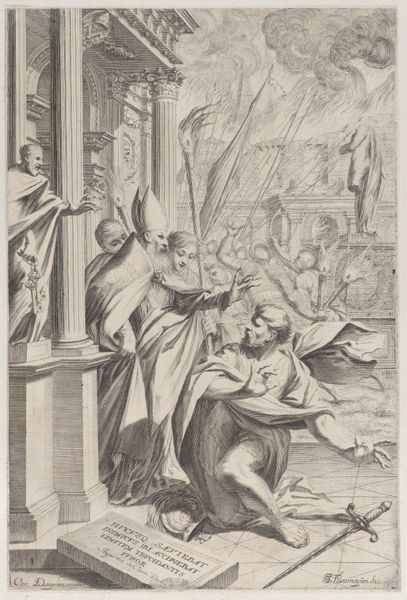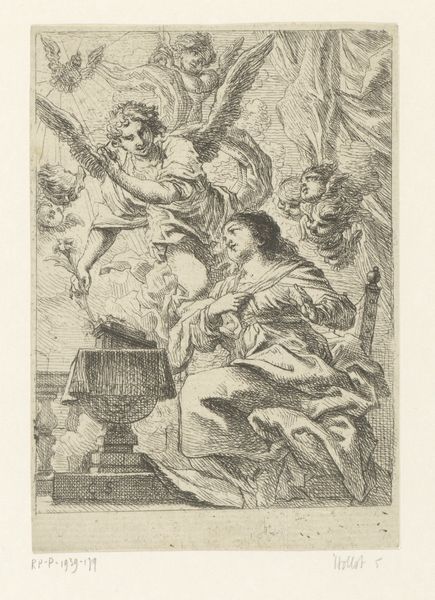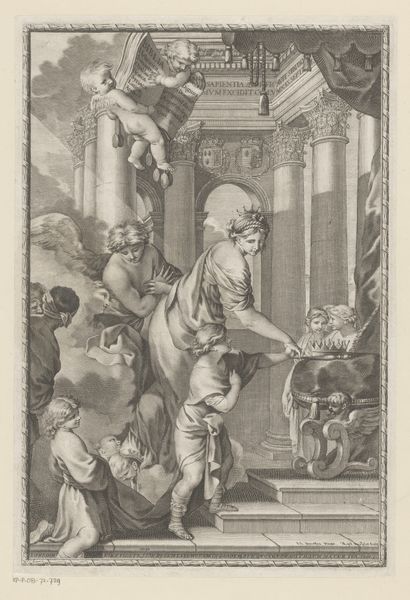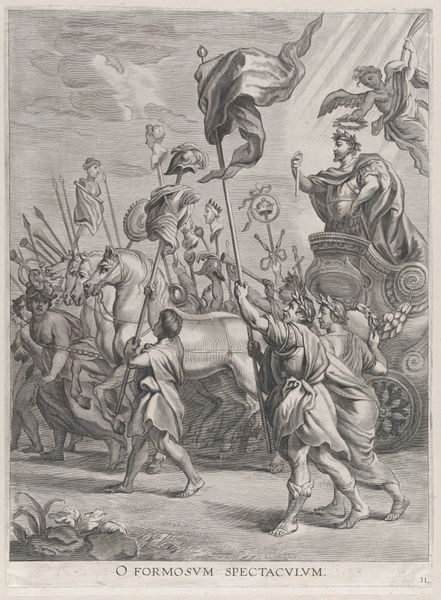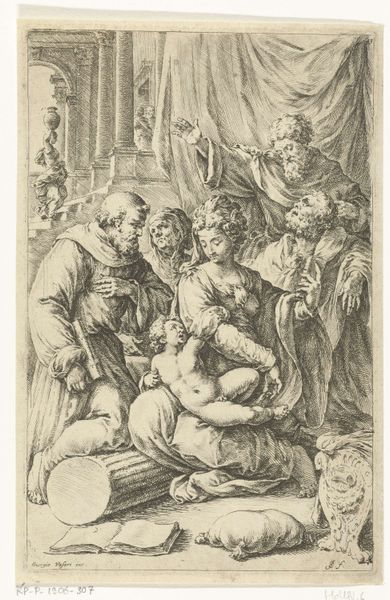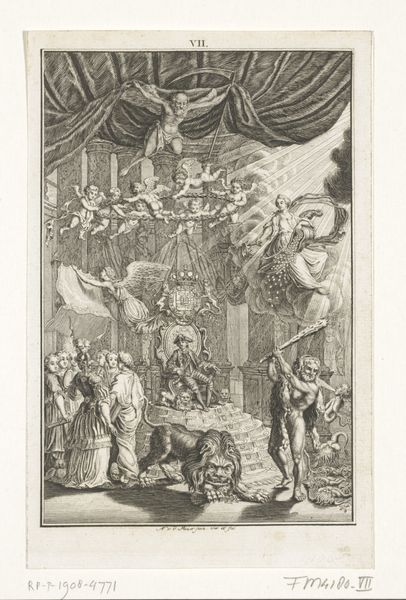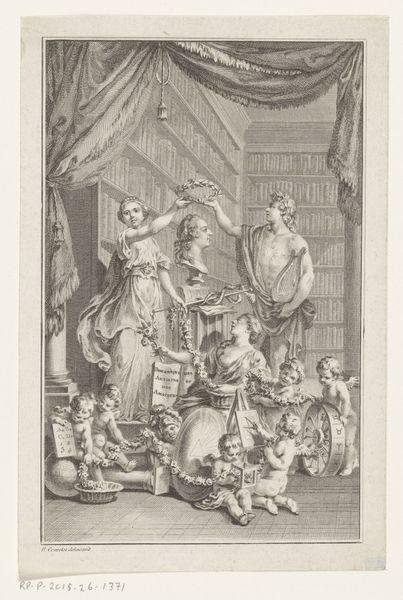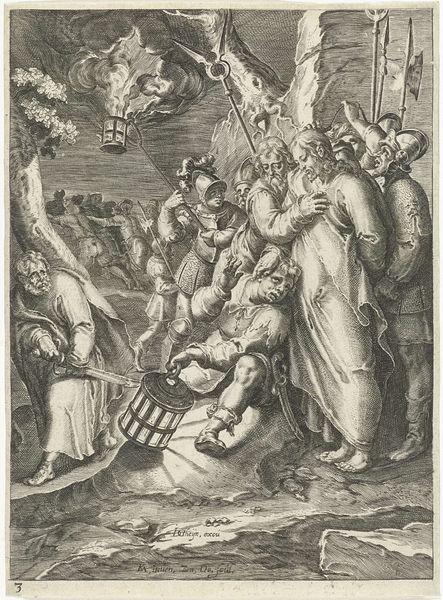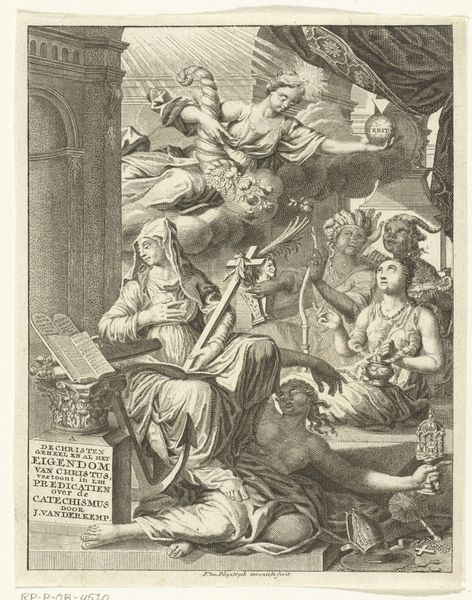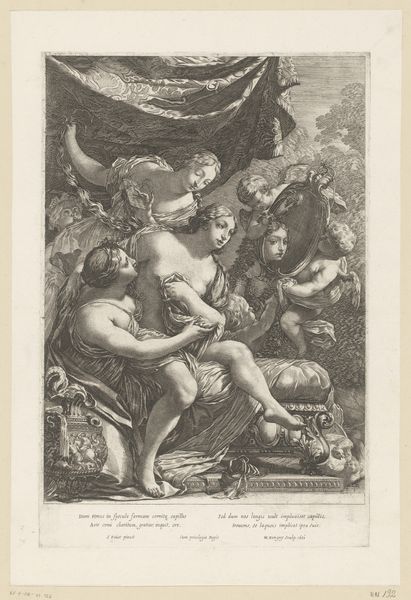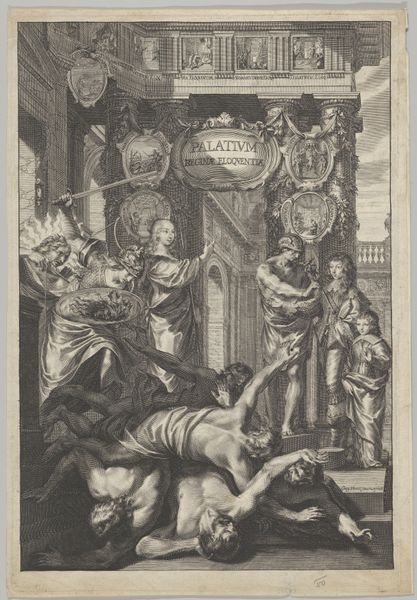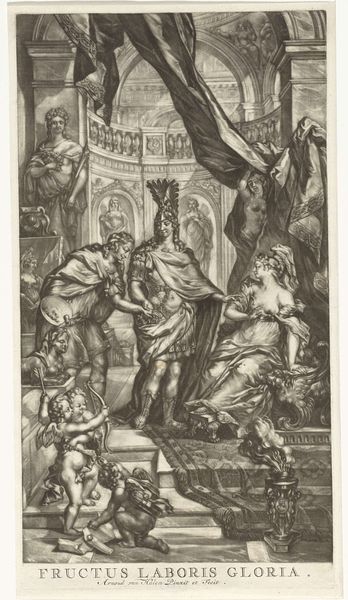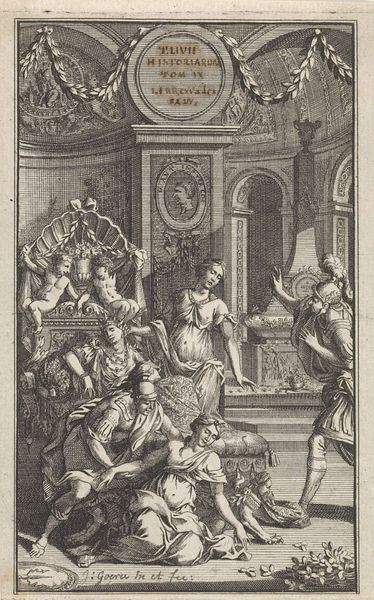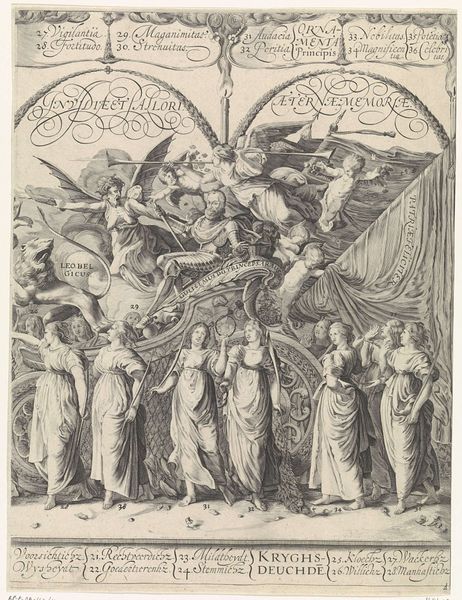
print, engraving
# print
#
mannerism
#
figuration
#
line
#
history-painting
#
italian-renaissance
#
engraving
Dimensions: height 442 mm, width 320 mm
Copyright: Rijks Museum: Open Domain
Curator: Here we have Domenico Tibaldi's "Annunciation," an engraving, likely created sometime between 1551 and 1583. It’s part of the Rijksmuseum’s collection. Editor: Wow, talk about dramatic entrances! The angel Gabriel is really making a scene, bursting into Mary's space with a sprig. You feel that raw divine energy… almost overwhelming, don't you think? Curator: Indeed. Tibaldi places the scene within a context of heightened spirituality, very characteristic of Italian Renaissance Mannerism. If we consider this through a lens of gender and power, Gabriel's forceful entry could symbolize the patriarchal forces at play. Mary, in her quiet acceptance, embodies submission, which reinforces prevailing social structures of the time. Editor: It makes me think of… invasion, actually. It's beautiful, sure, but that crowded swirl of angels in the top corner feels a bit suffocating, almost aggressive. The texture from the engraving makes it almost seem like you are viewing a chaotic storm brewing from above. What could this be symbolizing other than a one-sided communication, more of a divine mandate than an invitation? Curator: The print, typical for the time, served multiple functions. Certainly, art, even prints, visually consolidated the Church’s power in the everyday lives of ordinary citizens, not just elites, through repeated symbolic messaging. Its themes are also important here. Mary is chosen to be the most important person of Christianity and by situating her indoors, as she reads from the sacred texts, as a young maiden dedicated to God, Tibaldi subtly defines proper feminine virtue at the time. Editor: Interesting! While Mary is the figure of devotion for some people, I think everyone in their personal lives might have to negotiate those power imbalances or navigate unsolicited entries, spiritual, emotional or otherwise. It's like, where is Mary's agency? How would she see it? Curator: I suppose the lack of visible agency speaks volumes, given the prevailing constructs of the period regarding women's roles. Yet, her acceptance also offers a counter-narrative of spiritual strength and grace under immense pressure. Perhaps we are more so reflecting on the complex relationship between choice, faith, and societal expectations as embodied within this piece. Editor: Right, a mirror reflecting back at us our contemporary expectations, maybe? Still… All that white space, too... it feels incomplete. But powerful! Curator: So much contained within lines, wouldn’t you agree? Editor: Totally. What a complex interplay happening here. Food for thought, really.
Comments
No comments
Be the first to comment and join the conversation on the ultimate creative platform.
